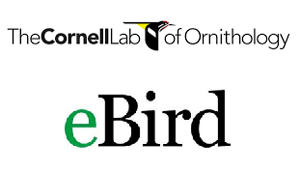Conservation Education Center
This protected wetland lies between 17E and 17W and is considered one of the best birding sites in New York State! Visitors can enjoy the view over the marsh or enjoy the flora and fauna along the trails. Each year, countless hawks, herons, egrets, wood ducks, mallards, warblers, and other wildlife species visit the Marsh. The Apalachin Marsh is owned by the Department of Transportation and managed by the Fred L. Waterman Conservation Education Center.
History of Apalachin Marsh
In 1964 avid birders and nature lovers Harriet Marsi and Florence Linaberry went on their weekly birding trip to the Apalachin Marsh. During one particular excursion, after watching a Sora Rail with her chicks moving through the reeds, they came across red construction flags in a line through the marsh. Confused and seeking more information about what might transpire in their beloved marsh, they consulted a nearby POSTED sign and contacted Mr. Tracy - an Owego resident who owned the plot of land at the time. They would later learn from Mr. Tracy, that NYS Route 17 was to be placed right through the Apalachin Marsh.
It was the mid-60s and birdwatching wasn't seen as important, nor was it the multimillion-dollar industry it is today. How could these two "respectable middle-aged women" with no prior experience with politicians or officials muster the influence required to protect the marsh? Harriet felt compelled to do something and began by writing a letter to the editor. Luckily, popular outdoor reporter Frank Dolan was aware of the marsh and was looking for a reason to bring attention to it. When Harriet wrote in he mentioned the marsh in his column prompting many sportsmen to write Harriet in support.
At the time, the Department of Public Works was in charge of the highway's construction. They had a lot of money and power, but Harriet still wrote to them with advice from the sportsmen. She also wrote to the Department of Conservation, who asked that she write a letter to the governor, as they were then much less robust than they are today! The governor thanked her for her input and said they would put it under consideration.
Frank Dolan continued to rally sportsmen with his column, but what could they do next? Harriet and Florence decided to visit Hornell to speak with the engineers for the project. Eventually, through their persistence and the outcry from their coalition of sportsmen, they convinced them to send an engineer to visit the marsh and speak with them. Florence suggested to the engineer that they build the highway on the existing railroad tracks. A major highway in the planning stage could surely be placed anywhere -- and this way it would easily miss the marsh.
Unfortunately, the engineer had no interest in hearing their ideas and maintained that the highway would be built exactly where the flags were. In one last attempt, her outrage boiling over, Harriet told the engineer "I have never heard of anything so stupid in my life ... Everyone knows you never build a highway roadway through a swamp!"
Convinced she had lost her chance to save the marsh by losing her temper that day, Harriet and Florence returned the following spring to check on construction progress. Sure enough, the bulldozers were already there, but to their surprise, they were not down by the swamp. The young man working explained that the highway was in fact being built on the railroad tracks, because "nobody ever builds a highway across a swamp." In that moment they knew they had won, and the marsh was saved.
Harriet never heard from the (newly named) Department of Transportation until a few years later when they wrote a newsletter explaining to the public that infrastructure development doesn't always require environmental harm. In May 1999, the New York Times commemorated the Apalachin Marsh’s preservation and lauded the efforts of Marsi and Linaberry. In it, representatives from the NYS DOT and Federal Highway Administration cited the Apalachin Marsh as a symbol of how the approach to road construction has changed over time. A former NYS landscape architect characterized Harriet and Florence as “farsighted” for “...trying to make the highway fit into the habitat.” Harriet and Florence’s journey to save the Apalachin Marsh shows just how much one or two passionate people can accomplish!
In 2023, Harriet's efforts were truly acknowledged, with a trail at the marsh named in her honor.
The marsh is still owned by the Department of Transportation but is managed by the Fred L. Waterman Conservation Education Center.

Harriet holding a Blue-winged Warbler she had just banded and was about to release. Harriet was a licensed bander for the US Fish & Wildife Service for decades.
Photo provided by Rick Marsi

Harriet releasing a Common Loon into the Susquehanna River in winter. The loon had mistaken a skating rink at Rec Park in Binghamton for a lake and landed on it. The bird couldn't take off, so Harriet captured and banded it; then released it in the river.
Photographed by The Binghamton Press
Photo provided by Rick Marsi
In the raw interview footage from a 1997 interview with WSKG, Harriet Marsi recounts her efforts to save the Apalachin Marsh. A shortened version can also be found on our YouTube titled "A Highway Through A Swamp?"
Raw interview footage courtesy of WSKG










